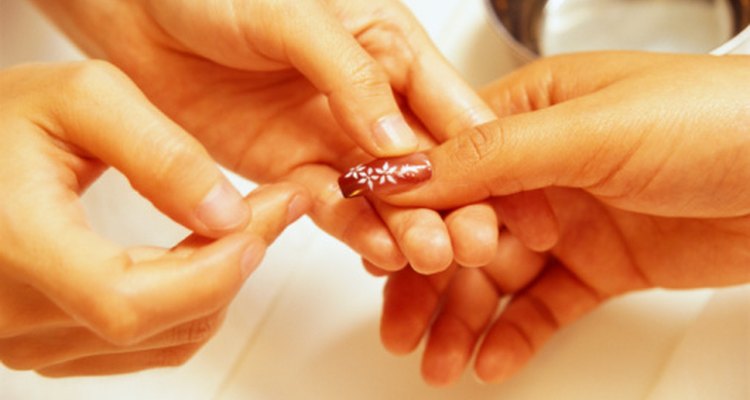
Many women enjoy the look and feel of longer and thicker nails, and some simply want a beautifying nail solution for an upcoming special event such as a wedding, class reunion or holiday. One almost immediate option is to visit a nail salon or to apply your own acrylic nails. Since nails grow continuously, acrylic nails need to be filled every few weeks for artificial-nail upkeep.
Description
A "fill" is needed when the natural nail bed grows longer, which leaves an unfilled space where the original acrylic nail was, close to the cuticle. To keep the desired look of acrylic nails that cover the entire nail bed, a fill is necessary. The salon technician uses the same technique of dipping a brush into acrylic liquid, pressing it into an acrylic powder and applying the gel-like solution to the unfilled area.
How to Fill Your Nails
Pour 1 inch of acrylic liquid into a glass container and acrylic powder into a second glass container. Use containers with lids to keep for future use to avoid waste. File the inner edge of the acrylic nail down using either a sandpaper bit on a handheld rotary tool or a common nail file. Brush nail primer over the open area of the natural nail bed and allow to dry for 30 seconds. Dip a flat acrylic brush into the acrylic liquid, brushing the side of the container to remove excess. Push the wet brush against the acrylic powder to form a ball of acrylic gel-like substance on the brush and set the gel onto the open nail bed. Pat the gel into all open areas of the nail bed, dipping the brush into the liquid and smoothing it flush with the existing acrylic nail. When dry, file the acrylic nail smooth and paint it.
Acrylic Nail Myths
Paragon Beauty Supply states that nails do not breathe, and the myth that acrylic nails harm the nail bed, which is made of hundreds of layers of dead keratin cells, is untrue. Many believe that nails need time without acrylic over them, but since nails do not breath, it is unnecessary. Other types of nail fills and overlays such as UV gel, wraps and no-light gels are all created from ingredients from the acrylic family, and no one method of artificial nail covering is better for your nails than another.
Dangers
Although rare, some people have allergic reactions to acrylic nail products and knowing the signs and symptoms of such a reaction can save you from negative health effects. Peeling, itchy nails and persistent redness are all signs of an allergy to the products, so discontinue use and consult your nail technician for products that do not contain allergens. Infections can occur when the nail salon does not sanitize their tools and products or if moisture is trapped between the acrylic and the nail bed. Ensure that your chosen salon is licensed and regularly inspected.
Related Articles

How to Use a Nailene Acrylic Sculpture ...

How to Treat a Cracked Nail

How to Fill in Nails

How to Remove Nail Tips

How to Fix a Crease in Nail Polish
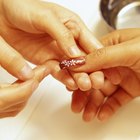
How to Extend Your Acrylic Nails ...

How to Make Nails Look Hard Without ...
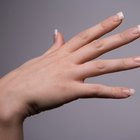
How to Get Natural-Looking Acrylic Nails
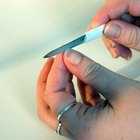
How to Regrow Nails

How to Apply "Tip and Dip" Nails ...

What Is a Full Set Manicure?
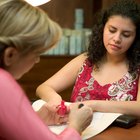
How to Repair Damaged Nails

Cures for Acetone Damaged Nails

How to Round Your Nails

How to Apply Acrylic Over Polished Nails

How Long Can I Wear My Acrylic Nail ...

How to Take Off a Claire's Glue-On Nail ...

If You Soak Your Nails in Water Will ...

How to Get Acrylic Nails Off at Home ...

How to Use Sanding Blocks for Nails
References
Photo Credits
Creatas/Creatas/Getty Images